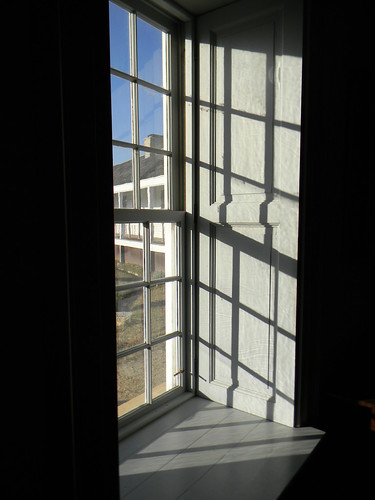 |
| To quote everyone's favorite viral video "What does it mean?" |
Unfortunately, we did not hear that much about the meaning of that place when we toured the site. Our site visit consisted of watching the orientation video (a decent in-house production), a 35-minute PowerPoint presentation on the history of interpretation at the fort from 1970 to today and a very quick visit to the site wherein the staff unlocked doors for us and described the types of programming they do for the public. We were talked at for about an hour on the craft of what they do at the site, but never shown that craft in action to judge for ourselves. Why is Fort Snelling important? Judging only by what we heard inside of the fort's walls, I'm not quite sure.
To be fair, this was only a symptom of a larger impulse which seemed to pervade the conference. Again and again, instead of proving by showing the bulk of the presenters tried to teach their skills by telling. Concept after concept flew by, with little to no actual examples of what works, no attempt to show how meanings can be forged. A convention center full of professional communicators often had a tough time communicating.
We protect our cultural landscapes and interpret them because we believe that the real, the true, the actual is one of the most potent tools. This is the fundamental ethic in interpretation: tie a story to a landscape (what the craft calls a "resource"). But as soon as we step in front of a PowerPoint projector, even interpreters seem to lose this core ethic. Instead of teaching through effective examples, facilitating meanings for our audiences to show them new techniques for facilitating meanings, we begin blathering on about the craft endlessly. We read every word off of our slides and narrate endlessly to crowds quite visibly disengaged from what we are saying to them. We bore our audiences with theory the moment we are told they are interpreters. In short, for some reason we check our interpretive impulse at the door.
If we preach as a profession that interpretation is the most effective type of teaching, why not practice what we preach? Why not show how to interpret well through powerful examples of what is effective instead of simply telling how we think it might work?
Setting foot in an historic fort in Minnesota after flying nearly a thousand miles to get there, we were visitors last Friday. But the staff didn't see that. All we wanted was to see some effective programming that could help us feel why Fort Snelling was important. But the presenters didn't try to understand who their audience was and what they came to the site seeking. We weren't interpreters when we walked through the gates of that site; we were visitors. We came seeking meaning; we left unfulfilled. We walked away with no new tools in our toolboxes, only a vague understanding that Fort Snelling used to do first-person, living history interpretation and now no longer does.
Jake leaned to me at one point during the day and said, "Remind me to never mention that I'm an interpreter to anyone when I visit a site. They immediately stop interpreting for you and just want to talk shop."
Jake, consider yourself reminded in spades.
So, what were the missed interpretive opportunities? Tune in next week when I'll try to give you the interpretive program I didn't receive at Fort Snelling. Just in time for Thanksgiving, I'll share with you the power of an historic landscape to show us the impacts of European colonization of the Americas. And it's a Civil War story to boot.


No comments:
Post a Comment